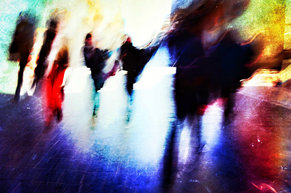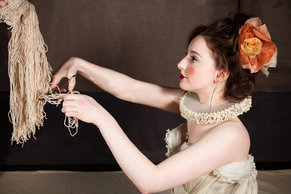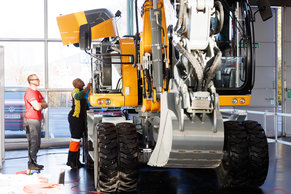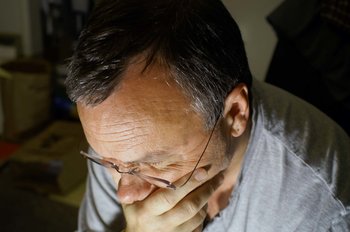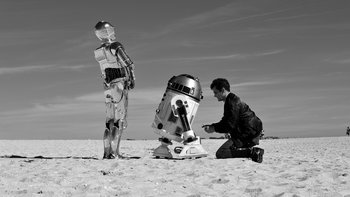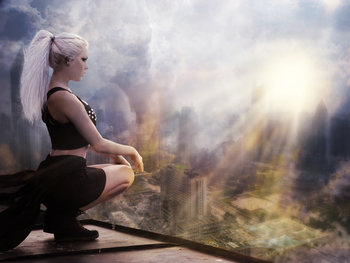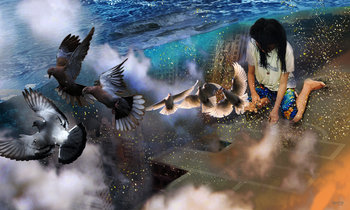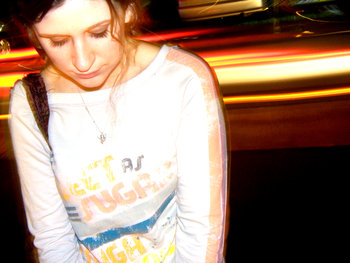
Society
Technology speeds the process of globalization by making it possible to communicate and share media seamlessly over borders.
As technology is widely adopted societies begin to assume that everyone has access. This can create a digital divide whereby people with less access or skills regarding technology can fall behind. For example, people who have difficultly accessing online job posts or applying for jobs through digital channels.
The emergence of cybercrime.
Disruption to public services such as hospitals due to cybercrime.
Paywalls and other fees for access that create barriers for people to access news, information and media. This creates information asymmetry based on socioeconomic status.
Technologies that represent an existential threat such as nuclear weapons.
Technologies such as the internal combustion engine that have created large amounts of pollution.
Culture
Access to simulated realities such as games may generate interest in philosophies such as idealism and relativism that suggest that reality is simply invented by the mind.
Changing patterns in how people spend time together. For example, a family where members spend much time on personal devices as opposed to shared experiences such as watching a movie together.
The ability to find people online who have similar interests to you resulting in thriving subcultures such as cosplay.
The ability to instantly explore much of the world's art, music and film on-demand using technologies such as streaming media services. This is an unprecedented opportunity for cultural enrichment and exploration.
A culture where a large number of people are involved in publishing media and opinions via social media.
The ability to communicate with people beyond your immediate social connections using online tools such as social media or dating apps.
Culture lag whereby culture is slow to adapt to technological change. For example, difficulty in expanding norms of politeness to new types of social processes in digital environments.
Beginning with television, people spent far more time looking at advertising. This may influence culture in various ways. For example, advertising may help to drive the desire for social status as advertising may attempt to create a fear of missing out.
Filter bubbles that allow people to consume media that aligns to their political views while avoiding competing views. This can isolate people and create political polarization.
Online information has sparked much interest in diy, maker culture and generally doing things for yourself.
Extensive access to computers, networks and communication tools have greatly accelerated the emergence of new knowledge whereby people can quickly research / challenge and build on ideas.
Economy
Technology increases productivity. For example, a farmer with a modern combine harvester may be able to harvest more grain in an hour than could be harvest in a month using manual processes.
By increasing productivity, technology generally increases the standard of living for technologically advanced nations.
Technology may allow amateurs to compete with professionals in many industries. For example, self-publishing that allows a blog to compete with a newspaper. This process is known as long-tail whereby amateurs collectively produce far more value than professionals in certain domains because there are so many of them.
The ability to work from home whereby computers in the home and network connectivity mean that going to the office has less and less value for many workers.
The ability to outsource services such as software development, IT support or customer service to firms in other regions or countries.
Dematerialization whereby economic value is increasingly based on things without much physical presence such as software, information, designs and media.
Technology that disrupts industries and professions whereby business models and skills become outdated. For example, automation that reduces the need for manual labor in a manufacturing industry.
Technology emerges and changes quickly such that technology related skills can quickly grow in demand. This represents an opportunity for anyone who is able to acquire high demand skills.
A shift towards continuous learning whereby adults may be expected to continue to acquire new skills throughout their career in order to keep up with change to technology and industries.
Online reviews and information exchange that give consumers more power over producers. For example, consumers can share negative comments about a low quality product such that producers are strongly pushed to address quality problems.
Lifestyles
The ability to communicate with distant friends and relatives. This may make it easier to travel for extended periods or move far from home.
The ability to instantly access much of the world's knowledge online.
Reduced privacy based on technologies such as inexpensive digital surveillance cameras.
People may find that engaging technologies such as games and social media are addictive such that they consume far too much despite negative consequences such as poor grades at school.
Short form digital media whereby people consume entertainment, gossip and facts in extremely small consumable bites. This may lead to a shift in attention span whereby people are unable to focus on things for extended periods of time.
Social isolation due to increased time spent with digital tools such as social media as opposed to meeting people and developing real relationships such as friendships.
Repetitive digital behaviors that can create wellness issues such as eye strain.
Spending less time moving and exercising due to time spent in engaging digital environments.
The ability to explore virtual worlds such as games is a new element of the human experience that arguably expands the scope of what we can think and do.
Lifestyle media that has created significant interest in alternative lifestyles such as minimalism. For example, sailing vlogs that generate interest in sailing as a lifestyle or hobby.

